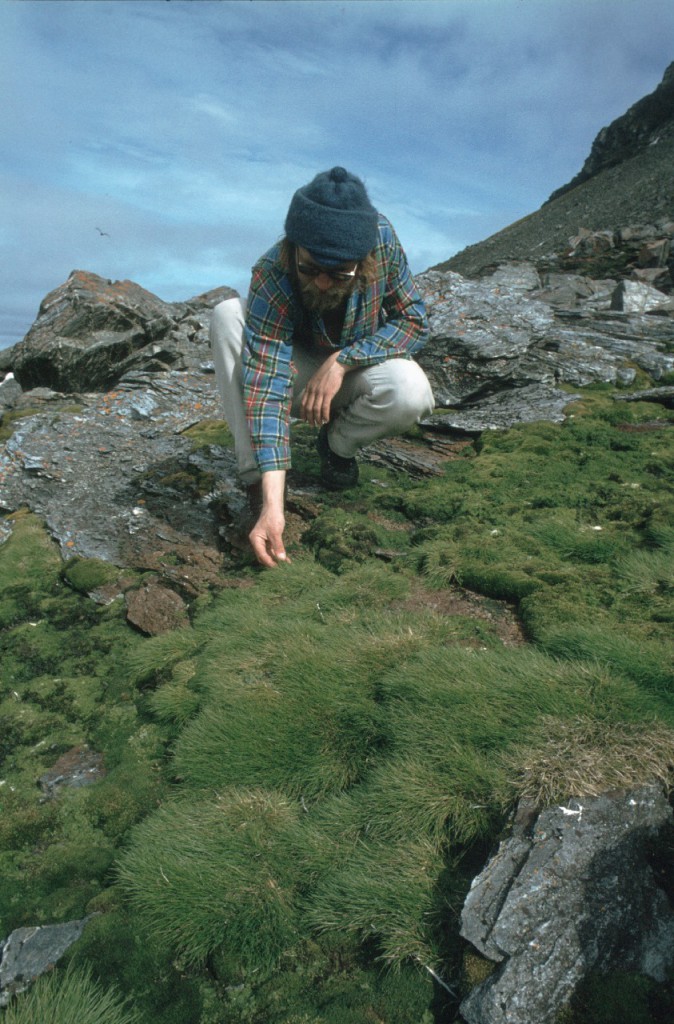Antarctic grass thrives in a changing climate
One plant species that grows in Antarctica appears to be thriving according to a team of UK scientists. Antarctic Hairgrass (Deschampsia antarctica) is more effective at absorbing organic nitrogen from the soil than the mosses that it lives alongside. This finding has implications for understanding how the nitrogen cycle works and is published this week in the first issue of the journal Nature Climate Change – part of the Nature series.
Samples were collected from the ice-free areas around British Antarctic Survey’s (BAS) Signy Research Station in the sub-Antarctic.
Lead author Dr Paul Hill from Bangor University said,
“We think of the Antarctic as a land of snow and ice. But, in summer on the Antarctic Peninsula, and the islands surrounding the frozen centre of the continent, the snow melts and many areas become green with mosses and two species of native flowering plant. As summer air temperatures in the maritime Antarctic have increased by about 1°C over the last 50 years, and Antarctic summers have become longer and warmer, one of these flowering plants, Antarctic Hairgrass (Deschampsia antarctica), has become increasingly widespread.”

Author and principal investigator Professor Davey Jones from Bangor University said,
“Plants need nitrogen to grow successfully. In coastal Antarctica, much of the nitrogen is locked in organic matter in the soil, which has been slow to decompose in the cold conditions. This is now becoming more available as temperatures increase.”
Plants absorb nitrogen from organic matter that breaks down in stages, forming peptides, amino acids and then inorganic nitrogen. The team made the discovery that Antarctic Hairgrass uses its roots to access nitrogen directly as peptides, thus bypassing the final stage and using a shorter sequence. By injecting a trackable nitrogen substance into the soil under the Antarctic Hairgrass the team monitored it being absorbed by the plant.
BAS author Kevin Newsham said,
“These findings have ramifications far beyond Antarctica. If the roots of plants in temperate and tropical regions are consistently found to absorb organic nitrogen in this way, then it could have implications for the management of agriculture in the future.”
Ends
Dr Paul Hill visited the BAS Signy Research Station in 2009. This was funded by the Natural Environment Research Council and forms part of the Antarctic Funding Initiative where university researchers can apply to carry out fieldwork in Antarctica with BAS.
British Antarctic Survey (BAS), a component of the Natural Environment Research Council, delivers world-leading interdisciplinary research in the Polar Regions. Its skilled science and support staff based in Cambridge, Antarctica and the Arctic, work together to deliver research that underpins a productive economy and contributes to a sustainable world. Its numerous national and international collaborations, leadership role in Antarctic affairs and excellent infrastructure help ensure that the UK maintains a world leading position. BAS has over 450 staff and operates five research stations, two Royal Research Ships and five aircraft in and around Antarctica.
Researchers wishing to carry out fieldwork in Antarctica with BAS can find out how to apply for funds at: http://www.antarctica.ac.uk/afi/